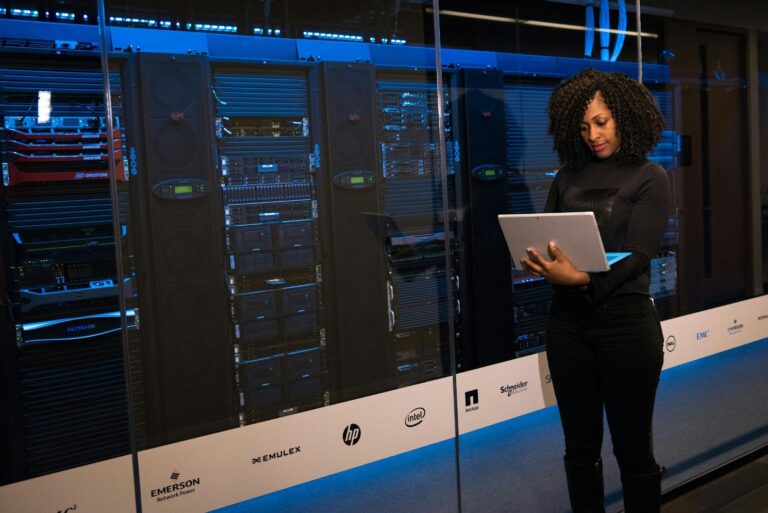Expanding Attack Surface? Here’s how to stay secure.

Work has never been more flexible.
Remote teams, cloud-based collaboration, and bring-your-own-device (BYOD) policies have made office-based work smoother and more accessible – even if the team isn’t actually in the office.
Businesses can scale faster, employees can work from anywhere, and productivity is no longer tied to a physical space.
But there’s a catch.
With all these benefits comes a growing attack surface.
More endpoints and more access points mean more opportunities for cybercriminals to slip through the cracks. And trust me, they’re taking full advantage of it.
So, what does this mean for your business? And more importantly, what should you do about it?
By understanding what’s at risk and taking a proactive approach, you can defend your business against modern threats without sacrificing productivity.
First, Gain Visibility Into ALL Assets
A modern attack surface extends well beyond traditional company networks, making it harder to track potential vulnerabilities.
That’s why the first step in managing an expanding attack surface is gaining full visibility into all digital assets.
After all, you can’t protect what you can’t see.
Conduct a Thorough Asset Inventory
An asset inventory is a full list of all devices, applications, and systems connected to your organisation’s network.
If something isn’t accounted for, it could be a security risk. You need to track:
- Endpoints – Any device that connects to the internet, including laptops, desktops, mobile phones, and tablets.
- Cloud Environments – Cloud-based systems and applications your company uses, such as file storage, email platforms, and customer management tools.
- Applications – All software and web services in use, including unauthorised or unapproved tools (shadow IT).
- Internet of Things (IoT) Devices – Smart devices like cameras, printers, or even smart speakers connected to the company network. Many of these lack built-in security protections.
- Third-Party Integrations – External software or services your company relies on, such as payment processing systems or project management tools.
Every untracked asset increases your risk.
But for larger organisations with complex IT infrastructures, manually monitoring assets isn’t practical.
Which leads to my next suggestion:
Continuous Threat Monitoring & Detection
Cyber threats don’t always announce themselves with flashing red lights.
Sometimes, it’s the smallest signs.
Continuous monitoring ensures these signals aren’t ignored, allowing security teams to react before attackers gain a foothold.
Setting up comprehensive threat monitoring could be its own blog post (or indeed its own branch of Cyber Security Services) – but here’s some strategies and tools you should be aware of:
1. SIEM & XDR
Security Information and Event Management (SIEM) tools centralise security data and use pattern-based analysis to detect anomalies.
Extended Detection and Response (XDR) tools takes this a step further by using AI-powered detection to respond to threats across networks, endpoints and cloud environments.
2. Threat Intelligence Platforms
Threat Intelligence Platforms (TIPs) provide real-time updates on new cyber threat intelligence, hacking techniques, and vulnerabilities.
Instead of just reacting to attacks, businesses can use TIPs to anticipate and prevent threats before they cause damage.
3. Monitoring Behaviour, Not Just Devices
Hackers don’t always break in with brute force. Sometimes they pose as legitimate users.
User and Entity Behavior Analytics (UEBA) helps detect suspicious activity, such as:
- Unusual login locations
- Accessing sensitive data outside normal work hours
- Multiple failed login attempts
Most cyberattacks start small.
Catching these signs early might not seem urgent, but ignoring them could lead to a major security breach.
With all that said, do you feel like you have full visibility over your network? If you do, that’s great and hopefully the next section will help you push forward – if not, it will show you how to get started.
Build a Proactive Security Framework
A growing business is something we all strive for (myself included). But if you’re at a stage where ‘expanding attack surface’ is becoming a concern, realistically there aren’t any shortcuts.
It will take time and effort to understand the specific threats to your business – but the following framework will help you get started.
Any time I begin working with a client with a large attack surface, these are my priorities.
1. Prioritise Risks
As your attack surface grows, so does the number of potential threats. But not every risk demands immediate attention.
Prioritising security based on impact helps focus resources where they’re needed most.
Conducting regular risk assessments helps identify and classify:
- Critical assets – What data, systems, or operations would cause the most damage if breached?
- High-risk entry points – Where is your attack surface most exposed? Prioritise public-facing systems, remote access points, and cloud workloads.
- Likely attack methods – What types of threats are most relevant to your industry? Threat Intelligence Platforms (TIPs) help here.
By focusing security efforts on the most valuable and vulnerable parts of your attack surface, you can mitigate the most severe risks first.
(Note: This is an essential strategy for businesses on a budget!)
2. Strengthen Access Control & Adopt Zero Trust Security
Gone are the days when businesses could trust everything inside their network.
Zero Trust Architecture (ZTA) assumes that no user, device, or application is automatically safe.
This approach helps actively monitor and secure potential attack surfaces instead of taking security for granted.
Here’s how to put Zero Trust into action:
a) Verify Every Access Request
Not all access requests are legitimate, even if they come from inside your organisation.
Businesses should implement strict identity verification, checking:
- User identity – Is the person requesting access who they say they are?
- Device security – Is the device up-to-date and compliant with security policies?
- User behaviour – Is this access request normal for this user, or does it seem suspicious?
b) Apply Least Privilege Access (LPA)
No employee should have unrestricted access to all systems.
Giving users only the minimum access required for their role and limits potential damage if their account is compromised and reduces total attack surface.
You should:
- Restrict access by job function
- Limit third-party vendor permissions
- Regularly review and remove access (especially when employees change roles or leave the company).
c) Use Multi-Factor Authentication (MFA)
Relying solely on passwords isn’t secure at all.
MFA adds an extra layer by requiring users to verify their identity through a second factor, such as:
- A one-time passcode (OTP) sent via text, email, or an authentication app
- A biometric scan, like a fingerprint or facial recognition
- A physical security key
This reduces the attack surface by making employee logins harder to access.
d) Limit Public-Facing Systems
Each publicly accessible system is a potential entry point for hackers.
So, if a system doesn’t need to be open to the internet, lock it down.
Reducing your public attack surface makes it much harder for hackers to find a way in, especially when combined with other access control measures.
3. Automate Security & Patch Vulnerabilities
As remote work, BYOD policies, and shadow IT expand attack surfaces, unpatched vulnerabilities are becoming more common and riskier.
The longer they go unaddressed, the greater the chance of exploitation.
Automation is a great way to close these security gaps quickly and efficiently:
- Automate Patch Deployment – Regularly update operating systems, applications, and cloud services to prevent attackers from exploiting outdated software.
- Scan for Security Gaps – Use automated tools to detect misconfigurations in cloud environments and uncover hidden risks.
- Use Configuration Management Tools – Follow industry benchmarks, such as CIS (Center for Internet Security) guidelines, to maintain best practices across all systems.
If you’re worried about your cloud configuration we offer Cloud Assessment Services to keep everything running smoothly and securely.
4. Prepare for Incidents & Ensure Business Continuity
No security defence is foolproof. As your attack surface grows, weak spots will always exist.
Preparation is key.
A well-structured incident response plan helps minimise damage and ensures a swift recovery when an attack happens.
a) Develop a Comprehensive Incident Response Plan
Clearly outline step-by-step actions for detecting, containing, and mitigating cyber incidents across cloud, endpoint, and network attack surfaces.
Ensure your plan includes:
- Defined response protocols for different types of attacks.
- Assigned responsibilities for managing third-party integrations and vendor-related risks, as these often-overlooked entry points can be a major weak spot.
b) Test Your Defences with Simulated Attacks
Proactively identifying vulnerabilities is just as important as responding to threats.
- Run attack simulations in a controlled environment to refine your response strategy.
- Prioritise public-facing systems, as these are often the most exposed attack surfaces.
c) Ensure Rapid Recovery & Business Continuity
Even with strong defences, a cyberattack can still cause disruption.
A solid recovery plan minimises downtime and data loss.
- Maintain automated, secure backups to protect critical data.
- Implement a disaster recovery plan to restore operations quickly if a breach occurs.
A reliable backup and clear recovery strategy can mitigate the impact of a compromised attack surface.
The strongest defences come from preparation, not just technology.
Expanding Attack Surfaces Are Inevitable
The truth is, as businesses adopt more tools and flexible work methods, their attack surface will continue to expand.
So, instead of overlooking these new vulnerabilities, organisations must proactively identify and address them.
You can start by gaining full visibility into all potential entry points. Then, build a proactive security framework to defend against emerging threats.
In short:
Stop treating cybersecurity as an afterthought.
A proactive approach keeps threats in check before they become crises – which is where Cyber Alchemy comes in.
Our Cyber Security Consultancy provides expert advice to help you secure your business and keep your attack surface to a minimum. Contact us now to build a tailored security strategy that fits your needs.





